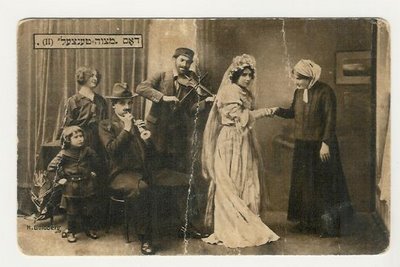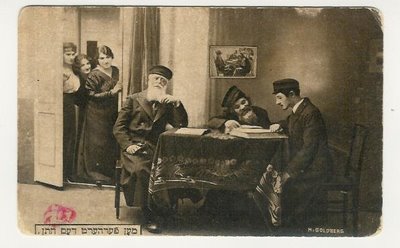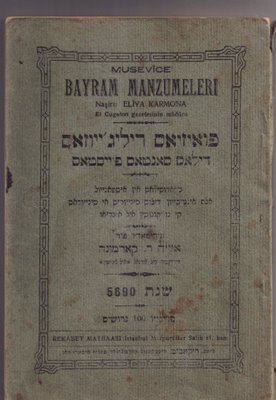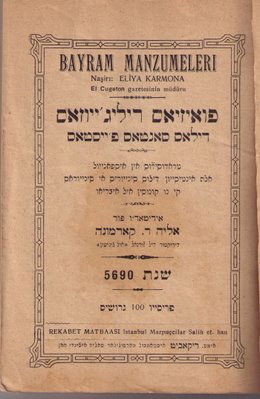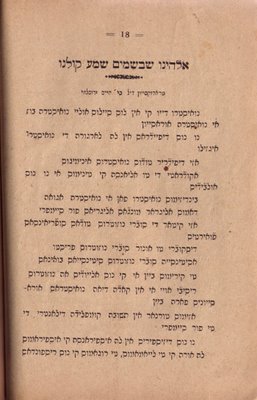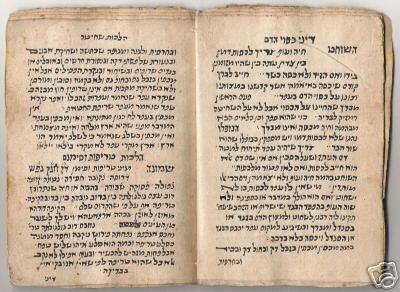
Nordeste Semita
Evidencias Judaicas na cultura Nordestina
Estando claro o processo historico da influencia etnica e cultural dos judeus sefaradim dos judeus ibericos,no Nordeste brasileiro, passemos a exemplificar como essa influencia se traduz nos costumes, na moral, na etica, na estetica, na dietetica e na cultura do homem (e da mulher) nordestino.
Nos costumes do interior do Nordeste ainda se retem o habito de usar mantilhas negras, bem como enterrar os mortos envoltos em pecas de linho brancos sem sem costuras nem cortes. Diversos autores afirmam terem visto pessoas idosas colocar sobre a cabeca documentos que acabam de receber por habito tipicamente semitas.
O "culto superlativo da honra" (expressao de Poliakov, para se referir a etica sefaradi) e um dos mais expressivos simbolicos da cultura nordestina, onde - segundo o ditado popular - a honra so se lava com sangue. Outro aspecto judaico-nordestino e a poligamia. No direito consuetudinario nordestino, e licito ao homem ter mais de uma familia, pois isso simboliza posses, prestigio e poder.
E o caso do direito judaico, que permite a poligamia - nao obstante sabermos que existe um decreto do rabino Gershon de Morgucia, pelo qual a poligamia fica interditada aos judeus por mil anos ( a partir do seculo X). Note-se que a autoridade teologica do referido rabino atinge os judeus askenazins. Em sendo assim, os judeus sefaradim podem contrair nupcias com mais de uma mulher.
Ao arrepio da lei, a poligamia e largamente praticada por todas as classes sociais, economicas e culturais do Nordeste do Brasil, chegado a ser quase uma instituicao da tradicao patriarcal nordestina.
Tambem sao diversos os autores que apontam o nomadismo como um elemento judaico constitutivo da personalidade do nordestino. Do mesmo modo que existe um esteriotipo do judeu errante, existe tambem a figura do nordestino nomade.
E chamado de pau-de-arara, de retirante, porque e o classico imigrante da nacao brasileira.O apego aos estudos e as letras, que constitui um tracos vitais do judaismo de todos os tempos, e uma das caracteteristicas marcantes do nordeste, em todo os periodos da historia nacional.
Ha alguem mais desconfiado do que um judeu? So se for um sertanejo nordestino. Apegado a um rigido codigo de honra, avesso a vida sedentaria, conquistando a sobrevivencia diaria no semi-arido nordestino, o sertanejo aprendeu a de tudo e a de todos e a so se apegar a D'us. Igualzinho aos judeus.
No Nordeste ha, ainda, uma crenca generalizada de que as familias que possuem sobrenomes de origem animal ou vegetal descendem dos judeus cristianizados a forca. Correbora essa crenca o fato de ser muito comum no Nordeste os pais batizarem seus filhos com nomes retirados do antigo testamento. Alem disso, um circulo vicioso de casamentos endogamicos fez com que muitos troncos sefaradins tenham preservado etnicamente no Nordestedo Brasil.
Essa "resistencia ao sofrimento" tao expressiva no nordestino, que o faz sobreviver mesmo contra todas as adversidades, e uma heranca sefaradi, assim como habitos que se inscrevem no rol das "supersticoes", como cobrir os espelhos de casa quando quando alguem morre, chamar as carpideiras para chorar os defuntos, derramar a agua dos potesm onde alguem falecer, varrer a casa da frente para tras.
habito de abater galinha seccionando-lhe o pescoco e vertendo o sangue no solo e, antes disso, testando o fio da faca na propria unha sao sinais de uma heranca inconsciente dos antepassados sefaradins que quase todo nordestino traz em seu sangue, e sua irrecusavel heranca genetica.
Mas uma coisa e certa: "A identidade de nomes constantes dessas relacoes com tantas velhas familias brasileiras, oferece um elemento de conviccao de que as origens do nosso povo alongam-se mesmo, milenios em fora, ate as fraldas do Hebron e do Sinai."
fonte Iberia-judaica: Roteiros da memoria
by Anita Novinsky e Diane Kuperman
